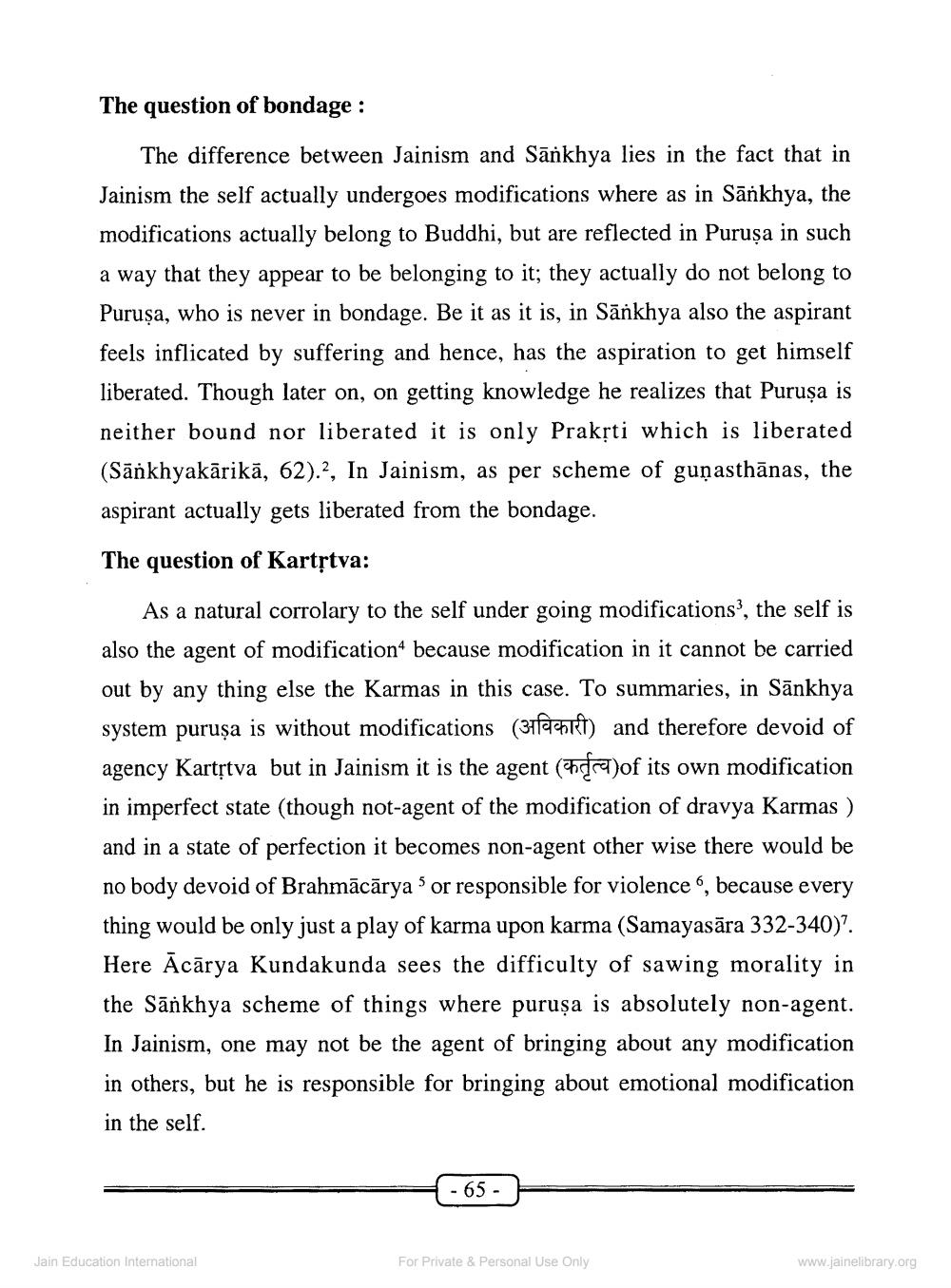________________
The question of bondage :
The difference between Jainism and Sankhya lies in the fact that in Jainism the self actually undergoes modifications where as in Sānkhya, the modifications actually belong to Buddhi, but are reflected in Purușa in such a way that they appear to be belonging to it; they actually do not belong to Purușa, who is never in bondage. Be it as it is, in Sānkhya also the aspirant feels inflicated by suffering and hence, has the aspiration to get himself liberated. Though later on, on getting knowledge he realizes that Purușa is neither bound nor liberated it is only Prakrti which is liberated (Sānkhyakārikā, 62).2, In Jainism, as per scheme of guṇasthānas, the aspirant actually gets liberated from the bondage.
The question of Kartstva:
As a natural corrolary to the self under going modifications, the self is also the agent of modification because modification in it cannot be carried out by any thing else the Karmas in this case. To summaries, in Sānkhya system puruṣa is without modifications (31fahrt) and therefore devoid of agency Kartștva but in Jainism it is the agent (her)of its own modification in imperfect state (though not-agent of the modification of dravya Karmas ) and in a state of perfection it becomes non-agent other wise there would be no body devoid of Brahmācārya 5 or responsible for violence, because every thing would be only just a play of karma upon karma (Samayasāra 332-340)? Here Ācārya Kundakunda sees the difficulty of sawing morality in the Sānkhya scheme of things where puruṣa is absolutely non-agent. In Jainism, one may not be the agent of bringing about any modification in others, but he is responsible for bringing about emotional modification in the self.
- 65 -
Jain Education International
For Private & Personal Use Only
www.jainelibrary.org




